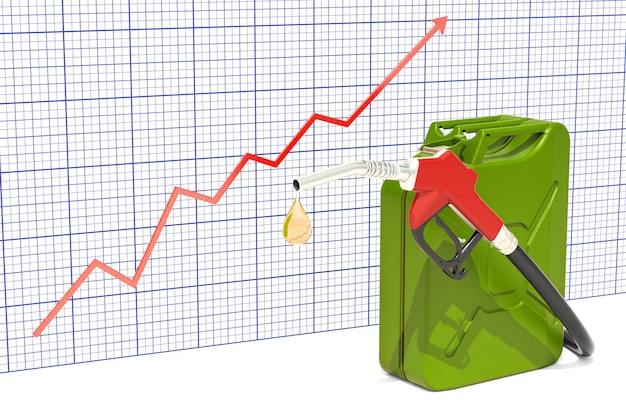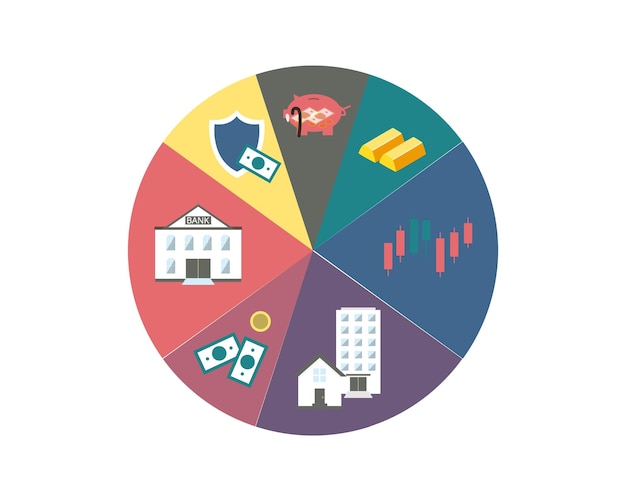How Will a 3.2% Inflation Rate in 2025 Affect Your Budget?

Understanding how the projected 3.2% inflation rate in 2025 will impact your personal budget involves assessing changes in the cost of goods and services, adjusting savings and investment strategies, and making informed financial decisions to mitigate potential financial strain.
Navigating the financial landscape requires staying informed and proactive. As we look ahead to 2025, understanding the potential impact of a projected inflation rate is crucial for effective personal budgeting. This article dives into how will the projected 3.2% inflation rate in 2025 impact your personal budget, offering strategies to help you prepare and protect your financial well-being.
Understanding the 2025 Inflation Projection
Before diving into the specifics, it’s essential to understand what the projected 3.2% inflation rate means for 2025. Inflation, at its core, represents the rate at which the general level of prices for goods and services is rising, and subsequently, purchasing power is falling.
A 3.2% inflation rate suggests that, on average, you can expect to pay 3.2% more for the same goods and services in 2025 compared to the previous year. This figure isn’t arbitrary; it’s derived from economic analysis and forecasts by institutions that track economic trends.
What Factors Influence Inflation Projections?
Several factors can influence inflation projections, including:
- Monetary Policy: Actions taken by the Federal Reserve, such as adjusting interest rates, can impact the money supply and influence inflation.
- Supply Chain Dynamics: Disruptions in the supply chain can lead to shortages and higher prices.
- Global Economic Conditions: Economic performance in other countries can affect import prices and overall demand.

Understanding these factors can give you a clearer picture of why the 3.2% projection is in place and how it might shift. Monitoring economic news and reports from reputable financial institutions is essential to staying informed about potential revisions to the inflation forecast.
In short, staying informed about the factors influencing inflation projections can help you better prepare for the future financial landscape. Keep an eye on economic reports and news to remain agile and responsive in your financial planning.
How Inflation Affects Your Everyday Expenses
The immediate and most noticeable impact of inflation is on your everyday expenses. As prices rise, each dollar you earn buys less, affecting everything from your grocery bill to your transportation costs.
To truly grasp the implications, it’s crucial to break down the common categories in your personal budget and examine how a 3.2% inflation rate might affect each.
Groceries and Food
Food prices are often among the first to reflect inflationary pressures. This can significantly increase your grocery bill. A 3.2% increase means you’ll need to allocate more funds for the same items. Planning meals, using coupons, and buying in bulk can help mitigate these costs.
Transportation Costs
Transportation costs, including gasoline, public transit, and car maintenance, are also sensitive to inflation. Gas prices can fluctuate significantly, impacting your commuting expenses. Consider using public transportation, carpooling, or investing in a more fuel-efficient vehicle to reduce these costs.
Housing and Utilities
Housing costs, including rent and mortgage payments, can increase with inflation, though often with a time lag. Additionally, utility bills like electricity and gas can rise due to higher energy prices. Energy-efficient appliances and mindful consumption can help lower these costs.
In essence, a 3.2% inflation rate will likely make your day-to-day living more expensive. By understanding where these cost increases are likely to occur, you can start to plan and adjust your spending habits accordingly. Focus on areas where you can cut back or find more cost-effective alternatives.
Adjusting Your Savings and Investment Strategies
Inflation doesn’t just impact your expenses; it also affects your savings and investments. If your savings aren’t growing at a rate that outpaces inflation, the real value of your money is decreasing. Therefore, adjusting your strategies is critical to maintaining and growing your wealth.
You need to assess whether your current savings and investment strategies are sufficient to outpace the projected 3.2% inflation rate. If not, it’s time to consider making changes.

High-Yield Savings Accounts
Consider moving some of your savings into high-yield savings accounts that offer competitive interest rates. These accounts can help you earn more on your deposits, potentially offsetting the effects of inflation. Compare rates and terms from different banks to find the best options.
Inflation-Protected Securities
Treasury Inflation-Protected Securities (TIPS) are designed to protect investors from inflation. The principal of TIPS increases with inflation and decreases with deflation, as measured by the Consumer Price Index. When the security matures, you are paid the adjusted principal or the original principal, whichever is greater.
Diversify Your Investments
Diversification is key to managing risk and maximizing returns. Spreading your investments across various asset classes, such as stocks, bonds, real estate, and commodities, can help you navigate different economic environments. Consider consulting a financial advisor to create a well-diversified portfolio that aligns with your risk tolerance and financial goals.
In summary, your savings and investment strategies must be proactive to combat inflation. High-yield savings accounts, inflation-protected securities, and a diversified investment portfolio can help you stay ahead of the curve and protect your financial future.
Negotiating Salary and Income in an Inflationary Environment
One of the most direct ways to combat the effects of inflation is by increasing your income. Negotiating a higher salary or finding additional income streams can help you maintain your purchasing power and standard of living.
When inflation rises, the cost of living increases, making it more important than ever to ensure your compensation keeps pace. Here are strategies for keeping up with inflation.
Research Industry Standards
Before any salary negotiation, research industry standards for your role and experience level. Websites like Glassdoor and Salary.com can provide valuable data on average salaries in your field. Use this information to justify your request for a raise.
Highlight Your Contributions
During salary negotiations, highlight your contributions to the company. Quantify your achievements whenever possible. For example, if you increased sales by a certain percentage or streamlined a process that saved the company money, be sure to present these accomplishments to your employer.
Consider Additional Income Streams
Apart from your primary job, consider exploring additional income streams to supplement your earnings. This could include freelancing, consulting, or starting a side business. Diversifying your income can provide an additional layer of financial security in an inflationary environment.
Ultimately, boosting your income is a critical strategy for dealing with inflation. Research salary standards, highlight your contributions, and explore additional income opportunities to stay ahead of rising costs. Regular assessment and proactive negotiation are key to maintaining your financial well-being.
Debt Management Strategies During Inflation
Rising inflation can make existing debt more manageable but also poses challenges for new borrowing. Implementing effective debt management strategies is essential to navigating an inflationary environment.
In this section, we’ll explore strategies for managing existing debt and making smart decisions about new debt.
Prioritize High-Interest Debt
Focus on paying down high-interest debt, such as credit card balances and personal loans. The interest accruing on these debts can quickly outpace any potential gains from inflation. Consider strategies like the debt avalanche or debt snowball method to accelerate your repayment efforts.
Evaluate Fixed vs. Variable Interest Rates
If you have variable interest rate debt, such as an adjustable-rate mortgage, be aware that rising interest rates can increase your monthly payments. If possible, consider refinancing to a fixed-rate loan to lock in predictable payments.
Avoid Unnecessary New Debt
During inflationary periods, it’s wise to avoid taking on unnecessary new debt. Evaluate your spending habits and identify areas where you can cut back. Delay large purchases if possible and save up the necessary funds instead of relying on credit.
In conclusion, strategic debt management is crucial during inflation. Prioritize high-interest debt, evaluate your interest rate options, and avoid unnecessary borrowing to maintain financial stability.
Long-Term Financial Planning and Inflation
Inflation isn’t just a short-term concern; it has significant implications for your long-term financial planning. Successfully navigating inflation requires embedding it into every aspect of your long-term financial goals.
How do you accommodate inflation into your long-term planning?
Adjust Retirement Goals
When planning for retirement, it’s essential to adjust your savings goals to account for inflation. Estimate how much your expenses will increase over time and ensure your retirement savings are sufficient to cover these costs. Consider using inflation-adjusted calculators to get a more accurate picture.
Reassess Insurance Coverage
Review your insurance coverage, including life, health, and property insurance, to ensure it’s adequate to cover current replacement costs. Inflation can erode the value of your coverage over time, so it’s important to make regular adjustments.
Consider Cost of Living Adjustments (COLAs)
If you are receiving benefits such as Social Security or a pension, check if they include cost of living adjustments (COLAs). COLAs can help protect your income from inflation by automatically increasing your payments to reflect rising prices.
In summary, incorporating inflation into your long-term financial planning ensures that your goals remain achievable despite rising prices. Adjust your retirement goals, reassess insurance coverage, and understand your cost of living adjustments to maintain financial security over the long haul.
| Key Point | Brief Description |
|---|---|
| 💰 Budgeting | Adjust your budget to account for a 3.2% increase in prices. |
| 📈 Investing | Diversify investments and consider inflation-protected securities. |
| 💼 Income | Negotiate salary and explore additional income streams. |
| 🛡 Debt | Prioritize high-interest debt and avoid unnecessary new loans. |
Frequently Asked Questions
▼
A 3.2% inflation rate means that, on average, the prices of goods and services will increase by 3.2% over the course of a year. This reduces your purchasing power because you’ll need more money to buy the same items.
▼
You can protect your savings by investing in assets that tend to outpace inflation, such as stocks, real estate, or inflation-protected securities (TIPS). Consider high-yield savings accounts as another option.
▼
To cut expenses, focus on reducing discretionary spending, meal planning to lower grocery costs, using public transportation or carpooling, and conserving energy to lower utility bills. Review your subscriptions and memberships.
▼
Yes, it’s generally wise to pay off high-interest debt faster during inflation. This prevents interest from accumulating and eroding your financial stability. Focus on debts with the highest interest rates first.
▼
Inflation reduces the purchasing power of your retirement savings, so you’ll need to save more to maintain your standard of living. Adjust your retirement goals to account for estimated inflation rates over the long term.
Conclusion
Preparing for a projected 3.2% inflation rate in 2025 requires a proactive and informed approach to personal finance. By understanding the potential impacts on your budget, adjusting your savings and investment strategies, and actively managing your debt, you can mitigate the challenges and protect your financial well-being in the coming year.





